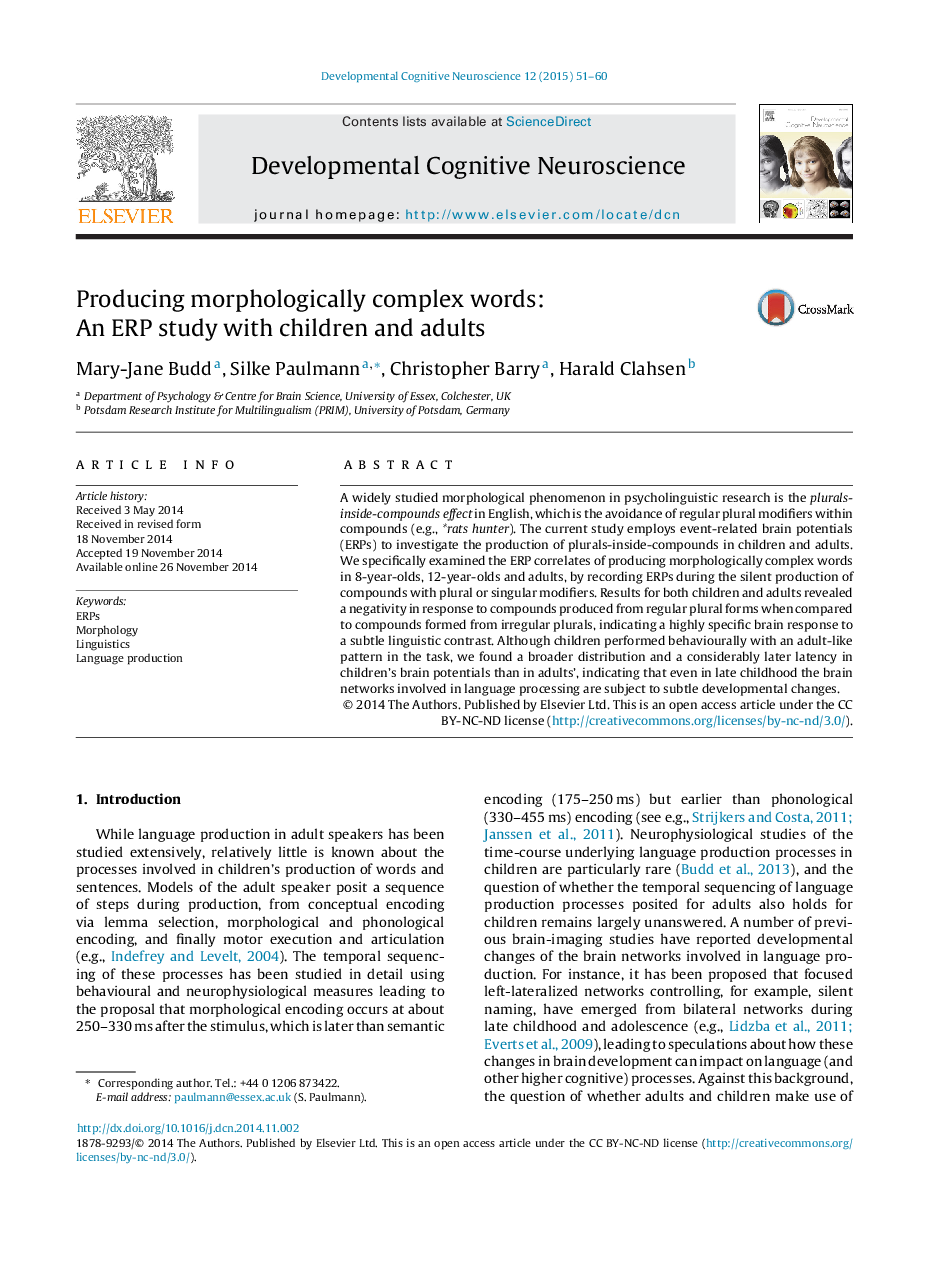| کد مقاله | کد نشریه | سال انتشار | مقاله انگلیسی | نسخه تمام متن |
|---|---|---|---|---|
| 4316589 | 1613111 | 2015 | 10 صفحه PDF | دانلود رایگان |

• ERPs are used to investigate the production of plurals-inside-compounds in children and adults.
• Results revealed a highly specific brain response to a subtle linguistic contrast.
• Distribution of ERPs differs between adults and children.
• Brain networks involved in language production are subject to developmental changes.
ABSTRACTA widely studied morphological phenomenon in psycholinguistic research is the plurals-inside-compounds effect in English, which is the avoidance of regular plural modifiers within compounds (e.g., *rats hunter). The current study employs event-related brain potentials (ERPs) to investigate the production of plurals-inside-compounds in children and adults. We specifically examined the ERP correlates of producing morphologically complex words in 8-year-olds, 12-year-olds and adults, by recording ERPs during the silent production of compounds with plural or singular modifiers. Results for both children and adults revealed a negativity in response to compounds produced from regular plural forms when compared to compounds formed from irregular plurals, indicating a highly specific brain response to a subtle linguistic contrast. Although children performed behaviourally with an adult-like pattern in the task, we found a broader distribution and a considerably later latency in children's brain potentials than in adults’, indicating that even in late childhood the brain networks involved in language processing are subject to subtle developmental changes.
Journal: Developmental Cognitive Neuroscience - Volume 12, April 2015, Pages 51–60